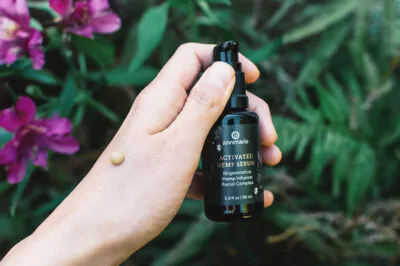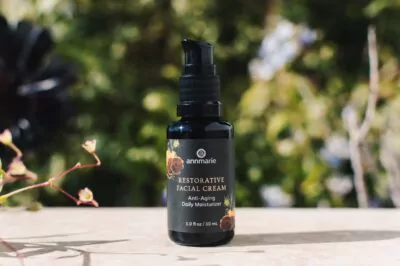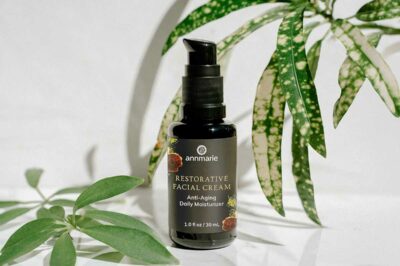Table of Contents[Hide][Show]
Natural skin care is more complicated than you may think. It starts with natural ingredients, like vitamins, minerals, and herbs. But it doesn’t stop there. Formulas must work together for the benefit of the skin. To do that, they must contain ingredients that can actually penetrate skin and go to work underneath the surface.
Unfortunately, not all ingredients do that. Some just rest on the surface of skin, to be washed off the next time you wash your face or take a shower.
Increasing the absorption of the ingredients in a skin care product is an area of consistent research and innovation. Every ingredient can be made to penetrate more easily, quickly, and consistently. Today, we’re talking about minerals.
If you apply minerals like copper or zinc to the skin, does it actually sink in and do some good?
How Minerals Benefit Skin
The skin needs certain minerals for optimal function. Here are some examples:
- Zinc helps revive your look, and also protects against environmental stressors.
- Sulfur is found in the greatest concentration in the hair, skin, and nails. It is known to help with oily and sensitive skin. It may also help encourage the exfoliation.
- Selenium is a powerful antioxidant, and may also help to control oily skin.
- Copper helps protect skin. It also firms and tightens, giving your skin a vibrant appearance.
- Silica is important for firming and tightening as well as keeping your skin looking smooth.
- Magnesium helps maintain moisture levels.
Will My Skin Absorb These Minerals?
If you get a new skin-care product that contains copper, for example, or zinc, will your skin be able to absorb these minerals?
If left in their simple, ionic form, most minerals aren’t likely to penetrate skin very well. That doesn’t mean we can’t use minerals topically, however. We just have to help them out. There are a number of ways to do this. Here are some examples:
- Shrink the particles: You may have heard of “nanoparticles.” Today’s skin care formulators, for example, created microfine zinc oxide so that you could apply it as a sunscreen and not have to walk around with a white film on your face. These nanoparticles, however, can be concerning, because if the mineral can penetrate skin, it can get into your blood stream. Therefore, it’s important to be sure you’re okay with absorbing into your body the nanoparticles you’re putting on your skin. In the case of zinc, scientists still aren’t sure how much of the nanoparticles get into the body, but so far, it doesn’t look like enough to cause any side effects (from too much zinc).
- Use a carrier: Sometimes pairing a mineral molecule with an organic, bio-available “carrier” molecule helps usher the nutrient into the lower levels of the skin.
- Convert them: You can chemically convert minerals into another form that still has the mineral’s benefits, but is more bio-available to the skin. For instance, some manufacturers change a mineral into a peptide—a compound that has two or more amino acids linked together—after which the skin can more easily take them up.
- Turn up the heat: People have used Epsom salts for hundreds of years to soothe and soften skin. A study out of the University of Birmingham, for example, showed that participants taking an Epsom salt bath for 12 minutes every day for 7 days increased their internal levels of magnesium. The heat in the bath helps open up pores and relax muscles, speeding up the absorption of the mineral. In addition, soaking for such a long period of time also promotes more absorption.
- Dissolve them: Minerals dissolved in water are also in a smaller, more bio-available form that the skin is more likely to be able to use.
Using Plant Ingredients to Deliver Minerals
Factors affecting absorption are many. Even if you dissolve minerals in water, for example, that doesn’t necessarily mean your skin will absorb them well. How long the product remains on your skin, how healthy your skin is, the state of the outer layer (if skin is too dry, for instance), and what other ingredients in the formula may interact with the process can all play a part in the overall effect.
That’s why here at Annmarie Skin Care we focus on natural, bio-available plant ingredients—because they are similar to the compounds we carry in our own bodies, and are more easily recognized and used by the skin than foreign, synthetic ingredients. Including black cumin oil in our Anti-Aging Facial Oil, for instance, gives you a bio-available source of calcium, potassium, magnesium, and zinc, providing skin what it needs in an easy-to-use form.
Do you look for minerals in your skin care? Please share your thoughts.
* * *
Sources
“Minerals and Skin Health,” Linus Pauling Institute at Oregon State University, http://lpi.oregonstate.edu/infocenter/skin/minerals/.








Now that I have used the intro kit … how do I order the foundation???
It often has the long term edge’ in producing big carp captures over lower quality baits with little biologically available carp nutrients.However, even a low food value boilie soaked in a mineral and vitamin supplement, will prove much superior to the same bait without! You too may well discover that minerals and vitamins are actually great attractors in their own right!It has been observed that certain vitamins like niacin, vitamin B6 and B12, folic acid etc, and essential minerals, along with betaine and amino acids in baits, seem to promote very good resultsThe author has many more fishing and bait edges’ up his sleeve. Vitamins are all the rage these days. However, it’s an important vitamin for the good of your eyes, so enrich your diet with foods like: oysters, red meat, and liver for a real zinc-boost; or, brewer’s yeast, milk, beans, and wheat germ if you want to absorb it in smaller amounts.